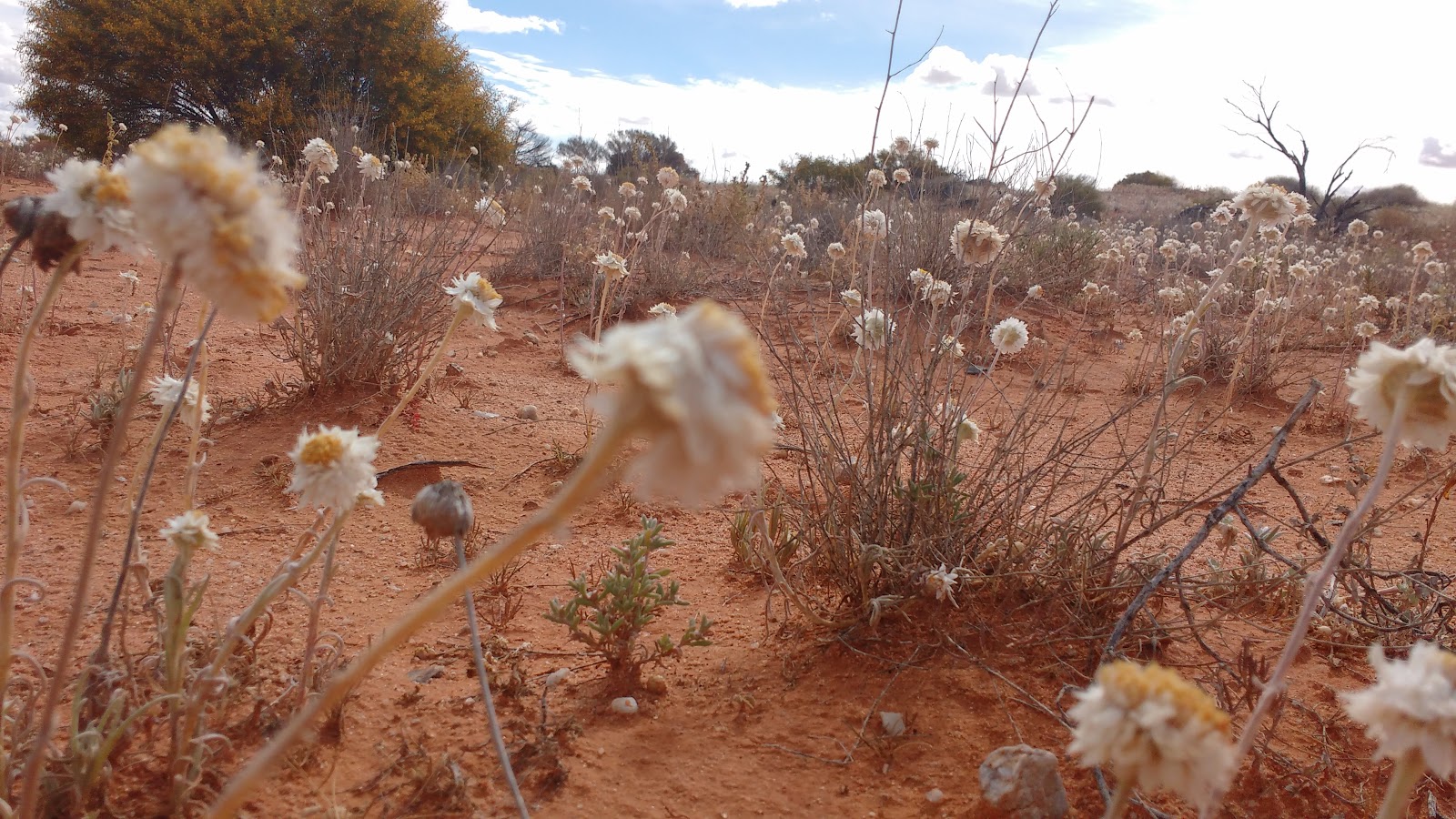The Oodnadatta track is a famous outback highway which follows the route formerly taken by the Ghan railway. It is a dirt road which is open to all vehicles for the first section subject to dry weather. After rain it is often closed or 4WD only. We had been reassured that it was currently in “fairly good condition” and we should have no difficulty as long as we were careful in sections where the rain had washed sections of the road out!
To add to the stress, it's extremely remote, with hundreds of kilometres between the tiny dusty towns, and seemingly endless desert plains in between. Not the kind of place you want to break down or damage your vehicle.
In spite of the harsh conditions, there's a special beauty to the desert. Vibrant red/orange dirt, grey-green scrubby bushes and the occasional pop of colour from the wildflowers. Initially we saw dozens of emus and kangaroos but after a while, only the odd lizard.
The road is very flat and straight, so driver fatigue can be a problem. One community minded local has done his part to alleviate the sameness by creating a sculpture park alongside the road. All of the sculptures are made from found or recycled materials.
Lake Eyre had very little water in it, so we got a good look at the salt flats.
To describe the days drive as stressful is a huge understatement but we eventually limped wearily into the historic caravan park at Coward Springs.
The natural hot spring has been attracting visitors since the late 1800’s. The tourists who used to come by train or camel must have been brave souls indeed!
The owners have restored the old railway buildings and have a small museum with artefacts and stories from long ago. It was absolutely fascinating and gave us an appreciation for the hardship of life in such a remote and inhospitable place..
The road improved somewhat the following day and we turned off the Oodnadatta track at William Creek, heading towards Coober Pedy.
We drove along the southern boundary of Anna Creek station - the largest privately owned property in the world, which at approximately 6 million acres is larger than some European countries!
.









No comments:
Post a Comment